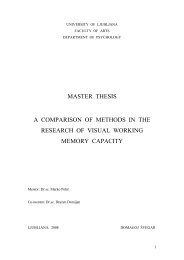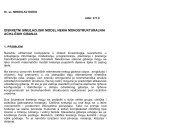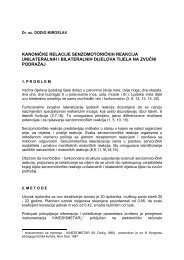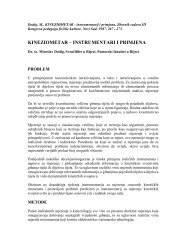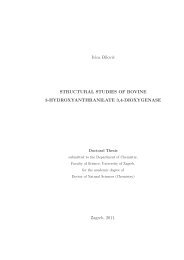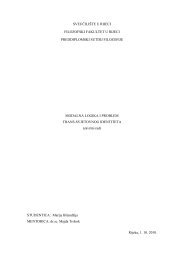Investigating Macroeconomic Determinants of Happiness in ...
Investigating Macroeconomic Determinants of Happiness in ...
Investigating Macroeconomic Determinants of Happiness in ...
You also want an ePaper? Increase the reach of your titles
YUMPU automatically turns print PDFs into web optimized ePapers that Google loves.
macro variables from 2007, than when we use sample means. This was to be expected s<strong>in</strong>ce<br />
the 2007 levels are <strong>in</strong> general more satisfactory (lower <strong>in</strong>flation and unemployment and<br />
higher GDP per capita). To be more precise, it seems that at late transition phase (sample<br />
mean) general economic conditions played a more important role, while with the<br />
advancement <strong>of</strong> transition and accession to the EU, when more economic stability was<br />
achieved, the importance <strong>of</strong> macroeconomic variables fell.<br />
When we look at the last two columns, an <strong>in</strong>terest<strong>in</strong>g f<strong>in</strong>d<strong>in</strong>g appears. All <strong>of</strong> the<br />
macroeconomic variables seem to have <strong>in</strong>creased <strong>in</strong> size for a successful woman. This means<br />
that, not only are successful women the happiest, their happ<strong>in</strong>ess is also the most <strong>in</strong>fluenced<br />
by macroeconomic variables. This might be due to the fact that they have all the sociodemographic<br />
characteristics that are considered to be “good”, “successful” and “desirable” by<br />
the society and so can now care more about their economic surround<strong>in</strong>gs. Unsuccessful men,<br />
on the other hand, care a lot less about the country-level variables. In other words, we might<br />
conclude that the successful women are more sociotropic, while unsuccessful men are more<br />
egotropic.<br />
Government expenditure is <strong>in</strong> all specifications constantly significant and <strong>of</strong> the<br />
expected non-l<strong>in</strong>ear form. Its marg<strong>in</strong>al effect is significantly larger for successful women than<br />
for unsuccessful men. This is <strong>in</strong> l<strong>in</strong>e with our expectations because, arguably, successful<br />
women appreciate additional <strong>in</strong>creases <strong>in</strong> quality <strong>of</strong> life that can be achieved only through<br />
publicly provided goods and services. If our government expenditure measure had <strong>in</strong>cluded<br />
welfare spend<strong>in</strong>g, subsidies and transfers, the results might have been different. We would<br />
expect these additional components to <strong>in</strong>fluence unsuccessful man’s happ<strong>in</strong>ess more, because<br />
this type <strong>of</strong> government expenditures is particularly aimed at socially disadvantaged people.<br />
6. Conclusion<br />
This paper shows that government expenditure significantly and non-l<strong>in</strong>early<br />
<strong>in</strong>fluences happ<strong>in</strong>ess <strong>in</strong> transition countries. Our premise is that government expenditure<br />
<strong>in</strong>fluences happ<strong>in</strong>ess positively up to a certa<strong>in</strong> threshold, and negatively afterwards. More<br />
precisely, we hypothesise that there is a ‘useful’ amount <strong>of</strong> government expenditures that<br />
positively <strong>in</strong>fluences happ<strong>in</strong>ess, and an excess/wasteful amount which affects happ<strong>in</strong>ess<br />
negatively. For this reason, we <strong>in</strong>clude this variable <strong>in</strong> both levels and squares <strong>in</strong> the<br />
happ<strong>in</strong>ess regression. This non-l<strong>in</strong>ear specification has not been used <strong>in</strong> other papers on the<br />
19




